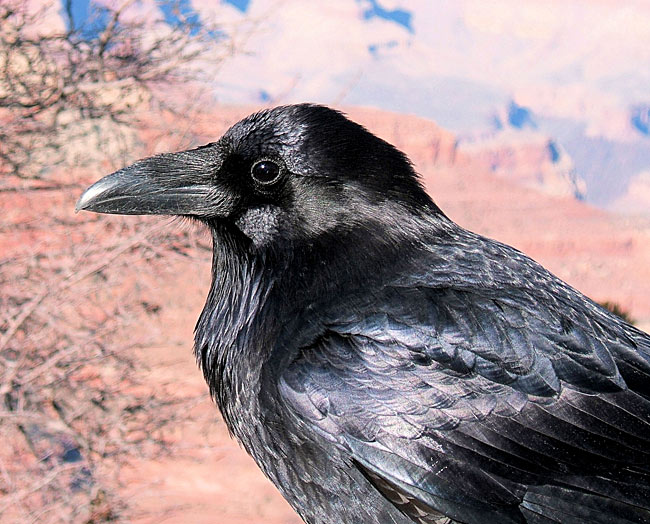Crows Display Incredible Common Sense

One species of crows is known for its clever use of tools, but a study now suggests that the birds' ability to put sticks to good use rivals that of bigger-brained primates.
The New Caledonian crows, native to the Loyalty Islands east of Australia, use sticks in the wild to fish ants out of nests. The new research shows the birds can also use common sense, not trial and error, in figuring out how to combine available tools to retrieve a snack.
"It was surprising to find that these 'bird-brained' creatures performed at the same levels as the best performances by great apes on such a difficult problem," said Russell Gray of the University of Auckland in New Zealand.
The findings are detailed in the Aug. 16 online edition of the journal Current Biology.
Sticky reasoning
The researchers placed a meaty snack in a hole too deep for the crows to reach—to get it, they needed to fish it out with a long stick, as is a natural behavior for them. Yet the long stick was also placed out of reach, leaving the birds with only a small stick to grab with their beaks.
"The creative thing the crows did was to use the short stick to get the long tool out of the box, so that they could then use the long stick to get the meat," said Alex Taylor, also of the University of Auckland.
Sign up for the Live Science daily newsletter now
Get the world’s most fascinating discoveries delivered straight to your inbox.
Gray and Taylor said the birds' tool-based skills rival those seen among great apes in their use of analogical reasoning, or common sense, rather than simple trial and error. Gray said analogical reasoning requires the ability to view a new situation as being essentially the same as a previous one.
"Evidence suggests that, from the earliest human stone tools, analogical reasoning has been at the core of human innovation," Gray said. "This hallmark of human intelligence may also be at work in both the great apes and New Caledonian crows and may explain why, out of all the crow species in the world, only these crows routinely make and use tools."
No bird-brains
Three of seven crows that were tested figured out the short-stick/snack puzzle on the first try without training, and all eventually learned the trick within 25 tries. Such a performance overshadows that of capuchin monkeys in a similar experiment reported in 2003 by other scientists, in which it took 50 tries for three-quarters of the monkeys to succeed.
Yet Gray and Taylor didn't stop with the first experiment, as they needed to see if the birds applied their "sticky" lesson to a new situation.
In a final test of wits, the two sticks were reversed so that the small stick was inside the toolbox and the long stick was handy. Although the crows probed the box containing the short stick at first, they eventually figured things out and took the long stick directly to the meat-filled hole—a clear demonstration of their analogical reasoning power, the researchers said.
- VIDEO: Making Tools Out of Twigs
- VOTE: Birds of Prey—Spot Today's Dinosaurs
- Tool Time: Crows Share Tricks of the Trade









